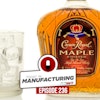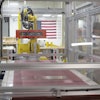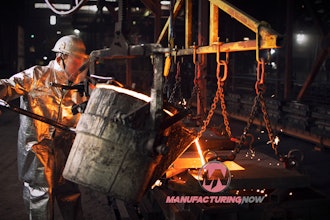Understanding Common Electrodes
To avoid weld cracking on thick, heavy material and/or complicated joint designs, select an electrode with maximum ductility |
Because variables such as storage techniques, electrode diameter, and flux composition all contribute to stick electrode selection and performance, arming yourself with some basic knowledge can help you minimize confusion and better ensure stick-welding success.
AWS Classifications
To help identify stick electrodes, the American Welding Society (AWS) uses a standardized coding system. Codes take the form of numbers and letters printed on the side of each stick electrode and each represents specific electrode properties.
For the most common stick electrodes, mild steel electrodes, here is how the AWS system works:
- The letter “E” indicates an electrode.
- The first two digits represent the resulting weld’s minimum tensile strength, measured in PSI. For example the number “70” in a E7018 electrode indicates that the electrode will produce a weld bead with a minimum tensile strength of 70,000 PSI.
- The third digit represents the welding position(s) for which the electrode can be used. For example, “1” means the electrode can be used in all positions and “2” means it can be used on flat and horizontal fillet welds only.
- The fourth digit represents the coating type and the type of welding current (AC, DC or both) that can be used with the electrode.
6010, 6011, 6012 & 6013
6010 electrodes can only be used with DC power sources. They deliver deep penetration and have the ability to “dig” through rust, oil, paint and dirt. 6010 electrodes feature an extremely tight arc, which can make them difficult for amateur welders.
6011 electrodes can also be used for all-position welding using an AC welding power source. 6011 electrodes produce a deep, penetrating arc that cuts through corroded or unclean metals. Many welders choose 6011 electrodes for maintenance and repair work when a DC power source is unavailable.
6012 electrodes work well in applications that require gap bridging between two joints. Many professional welders also choose 6012 electrodes for high-speed, high current fillet welds in the horizontal position, but these electrodes tend to produce a shallower penetration profile and dense slag that will require post-welding cleaning.
6013 electrodes produce a soft arc with minimal spatter, offer moderate penetration and have an easily removable slag. These electrodes should only be used to weld clean, new sheet metal.
7014, 7018 & 7024
7014 electrodes produce about the same joint penetration as 6012 electrodes and are designed for use on carbon and low alloy steels. 7014 electrodes contain a higher amount of iron powder, which increases deposition rate. They can also be used at higher amperages than 6012 electrodes.
7018 electrodes contain a thick flux with high powder content, and are one of the easiest electrodes to use. These electrodes produce a smooth, quiet arc with minimal spatter and medium arc penetration. Many welders use 7018 electrodes to weld thick metals. 7018 electrodes also produce strong welds with high impact properties and can be used on carbon steel, high-carbon, low-alloy or high-strength steel-base metals.
7024 electrodes contain a high amount of iron powder that helps increase deposition rates. Many welders use 7024 electrodes for high-speed horizontal or flat fillet welds. These electrodes perform well on steel plate that is at least 1/4 in. thick. They can also be used on metals that measure over 1/2 in. thick.
The Best Way To Choose
First, select an electrode that matches the base metal strength properties and composition. When working on mild steel, generally any E60 or E70 electrode will work.
Next, match the electrode type to your welding position and consider your available power source. Certain electrodes can only be used with DC or AC, while others can be used with both DC and AC.
You’ll also want to assess the joint design and fit-up you need, and select an electrode that will provide the best penetration characteristics (digging, medium or light). If you’re working on a joint with tight fit-up or one that is not beveled, electrodes such as E6010 or E6011 will provide digging arcs to ensure sufficient penetration. For thin materials or joints with wide root openings, select an electrode with a light or soft arc such as an E6013.
To avoid weld cracking on thick, heavy material and/or complicated joint designs, select an electrode with maximum ductility. Also consider the service condition the component will encounter, and the specifications it must meet.


















